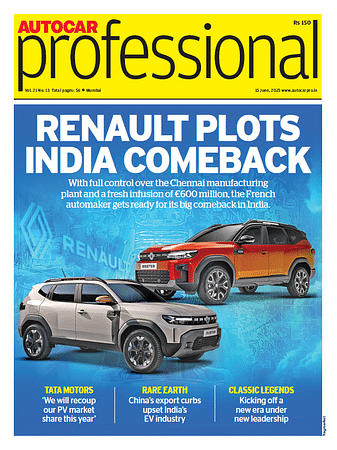Tata Motors Not Facing Rare Earth Supply Issues for Now, Exploring Alternate Sources: Chandrasekaran
Tata Motors remains unaffected by China's rare earth export curbs for now, with Chairman Chandrasekaran confirming stable supply, strategic inventories, and efforts to diversify sourcing while outlining future EV and demerger plans at AGM.
Tata Motors, India’s largest electric vehicle (EV) manufacturer, is not facing any immediate disruption in sourcing rare earth magnets despite China’s export restrictions, and is exploring alternate sources to safeguard future supplies, Chairman Natarajan Chandrasekaran told shareholders at the company’s 80th Annual General Meeting on Friday.
“As of now, we are okay. We are not facing issues… We are able to source the magnets that we need, and also we have plans for having the right level of inventory. We are working with the government. Also, we are working on sourcing from alternate sources,” Chandrasekaran said, addressing concerns over raw material availability critical to EV production.
China currently accounts for around 63% of global rare earth mining and nearly 90% of processing, making it a dominant supplier of neodymium and dysprosium magnets used in EV motors. Its export curbs have prompted automakers worldwide to review sourcing strategies.
With over 50% market share in India’s EV segment through models like the Nexon EV and Punch EV, Tata Motors has taken a proactive approach—maintaining strategic inventories and engaging with alternate supply channels to build long-term resilience.
Chandrasekaran also detailed the company’s planned demerger, aimed at splitting its commercial vehicle (CV) and passenger vehicle (PV) businesses into two separately listed entities by late 2025. The move is designed to sharpen strategic focus on the EV and green mobility transition.
Tata Motors is targeting 30% EV penetration in its passenger vehicle portfolio by 2030, potentially sooner, supported by rising demand, increasing localisation, and upcoming in-house cell production.
The company reported consolidated revenues of Rs 4,40,000 crore or $52.8 billion) for FY25 and achieved debt-free status despite macroeconomic and geopolitical headwinds. Production at its Gujarat gigafactory and in UK is slated to begin in Q4 2026, will bolster battery supply for Tata Motors and Jaguar Land Rover (JLR).
It is also expanding its electric bus portfolio under the PM E-Bus Seva scheme and advancing hydrogen truck trials, further reinforcing its commitment to sustainable transportation.
RELATED ARTICLES
“Missed Very Dearly”: Chandrasekaran Pays Tribute to Ratan Tata at Tata Motors AGM Amid Tata Group Crisis
Chandrasekaran balances grief and leadership at Tata Motors AGM as Tata Group confronts twin tragedies — the Air India c...
JLR May Face £1.6 Billion Hit from US Tariffs: N Chandrasekaran
JLR could face a £1.6 billion hit from US tariffs, with mitigation strategies expected to reduce the impact to £600 mill...
China's Rare Earth Export Restrictions May Delay India's EV Penetration: India Ratings and Research
Broader automotive sector remains resilient despite supply chain constraints.





 20 Jun 2025
20 Jun 2025
 344 Views
344 Views





 Ketan Thakkar
Ketan Thakkar


 Darshan Nakhwa
Darshan Nakhwa

 Shruti Shiraguppi
Shruti Shiraguppi

